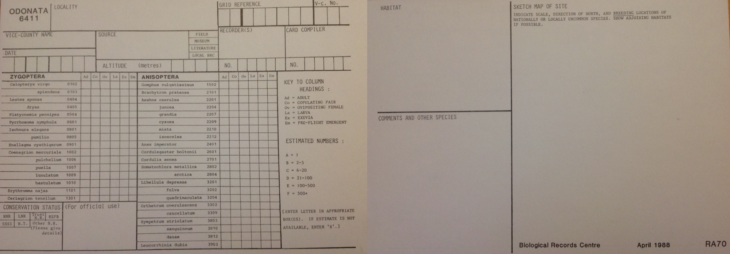Blog written by Jonathan Willet, BRISC Committee member.
It might surprise you to know that Lourdes has played a part in the creation of SBIF.
In 2009 I was on the committee of BRISC and tasked with writing the draft text for the petition, on the need for a national biological recording structure, to be sent to the Scottish Government. I had just completed a two-week walk in the Pyrenees with a friend and we were waiting at the station to get the sleeper train back up to Paris from Lourdes; yes, the one of St Bernadette fame. Sitting on a wall with my notebook I started thinking about what the text should be – the next BRISC Committee meeting was imminent – and after about 10 minutes of thinking I scribbled it down. This text was changed a little but the bulk of it made it to the petition committee. Imagine having ten minutes of quiet time these days. It is often too tempting to occupy oneself with your Smartphone either for work or leisure. Changed days indeed!
But I digress. Since this blog is about SBIF, I wondered, could I remember the first biological record I ever sent in?
Well, I think I can. It must have been back in 1996 when I was getting into dragonflies near Inverness. That year I had sent some pictures (of really common species) to Ray Collier, who very kindly wrote back and told me what they were. I am sure he gave me the contact details of Betty Smith, the Scottish Dragonfly Recorder at the time, and we subsequently corresponded about good sites to see some of the rarer species and I submitted my records to her on the Biological Record Centre RA70 record cards towards the end of the summer of 1996. I still have Betty’s letters and her hand-drawn maps are still really useful. That Autumn I started doing a BTO WeBS count which I have undertaken most years since then.
In 1988, a new recording card, RA70 was launched to identify Britain’s most important sites for breeding odonates
My recording has ebbed and flowed, hitting a high point in the early 2000’s when I seemed to have lots of free time and dipping somewhat in the last decade when it seems I haven’t. But I feel I am on an upswing again and part of this is down to technology.
Being a bit of a late adopter of the Smartphone (I just couldn’t give up my Nokia brick) I have slowly embraced the apps available for biological recording and have been using BirdTrack and iRecord this year. I hope this will remove the problem of getting my notebook records onto the computer, as on most occasions data can flow straight from the app. This said, I still always carry a map and GPS in my back pocket for when reception thwarts the mapping services and, of course, my trusty notebook because its battery never runs out…
Capturing and submitting these records is, however, just the start of their journey and often the start of a personal journey too!
I have been lucky that in the early days of recording dragonflies in Scotland there was a small network and it was easy to have a personal relationship with experts who increased my knowledge, answered my questions and verified my records. To be honest, in most recording groups you can find these relationships at the local, regional or national level depending in the taxon group that grabs your interest. There is a pleasing social aspect to recording, which isn’t often mentioned.
One of the amusing tales that came out of this personal relationship with Betty Smith was my sighting of an adult male Southern Hawker in 1996 at an inland lochan a few miles away from Beauly. When I wrote to Betty about this her reply was very dismissive of this record as it was over thirty miles away from the only (then) known breeding site in Culbin Forest. But I stuck to my guns and wrote back politely saying that I know what I saw and it certainly wasn’t a Common Hawker. In 1997 Betty came up and found not just adults but larvae! Vindication for me but also the first breeding record away from the previously only know site in the Highlands. Little did we know that this was evidence of the massive range expansion of this species all over the coastal plain to the east and west of Inverness and down the Great Glen. Nowadays there would be digital photos to help prove the sighting’s veracity and some emailing, but the result would be the same but just done more quickly.
Making the biological records and puzzling out what you have seen is the fun bit of recording but the “behind the scenes” activities that get your records onto the NBN Atlas are just as important and can’t always be automated. So, spare a thought for the verifiers giving up their free time to ensure the mobilisation of the more unusual records that we collect.
One of the crucial aspects of the SBIF vision is to create a national biological recording infrastructure that has the capacity and capability to validate, verify and mobilise all these new records so that they can be made available to support our personal, and collective knowledge of Scotland’s wildlife. Here’s hoping this day will come sooner rather than later! I will be most grateful when this day comes …

